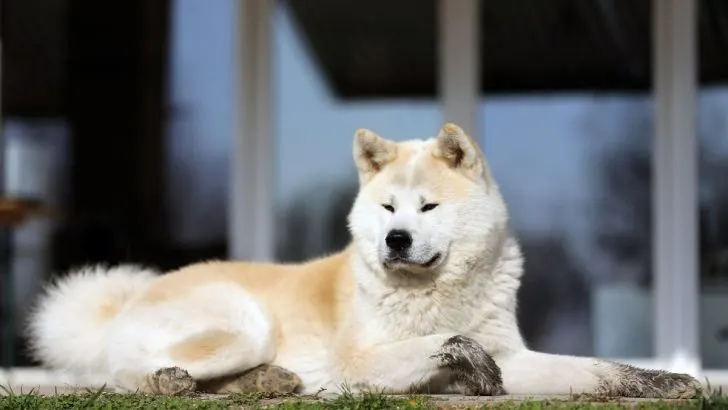Are you planning on becoming an Akita Inu owner, but are you wondering what some important aspects of each Akita growth stage are? Then you’re in the right place!
Understanding how fast your dog grows and what his full size is can be extremely helpful for various reasons. Most importantly, it can help you determine whether your dog is in good health and whether you should change something in his lifestyle.
So, if you want to know how big Akitas grow, and what you can expect, you’re in the right place! I’ll present you with an Akita growth chart, explain their average weight progression, and tell you a few things about factors that affect growth.
Let’s get started!
Akita Growth Chart
| Age | Height | Weight |
|---|---|---|
| 1 month | 8 – 10 inches | 7 – 12 lbs |
| 2 months | 10 – 14 inches | 17 – 27 lbs |
| 3 months | 14 – 18 inches | 30 – 40 lbs |
| 4 months | 18 – 21 inches | 35 – 50 lbs |
| 5 months | 19 – 22 inches | 45 – 60 lbs |
| 6 months | 20 – 23 inches | 55 – 70 lbs |
| 7 months | 21 – 24 inches | 60 – 80 lbs |
| 8 months | 22 – 25 inches | 65 – 85 lbs |
| 9 months | 23 – 26 inches | 75 – 95 lbs |
| 10 months | 24 – 27 inches | 90 – 110 lbs |
| 11 months | 24 – 27 inches | 95 – 115 lbs |
| 12 months | 25 – 28 inches | 95 – 125 lbs |
| 24 months | 25 – 28 inches | 100 – 130 lbs |
Akita Growth Stages
Watching your beloved pet grow is one of the most fulfilling parts of pet ownership. However, things are not easy when you aren’t certain just what milestone your pup should reach at a certain time.
It’s important to note that all individual dogs grow at their own rate. Some pups will grow quicker than their peers. Others are late bloomers who might be a little bit behind their littermates.
Male and female Akitas have many differences, and one of them is size difference. This might also impact their growth speed and the time at which certain milestones are reached.
As long as your Akita growth stages are not far behind what is shown in the growth chart, you have nothing to worry about. It’s perfectly fine for your pup to be slightly larger or smaller than other pups of his age.
Still, here is what you can expect in various developmental stages:
0 – 1 Month
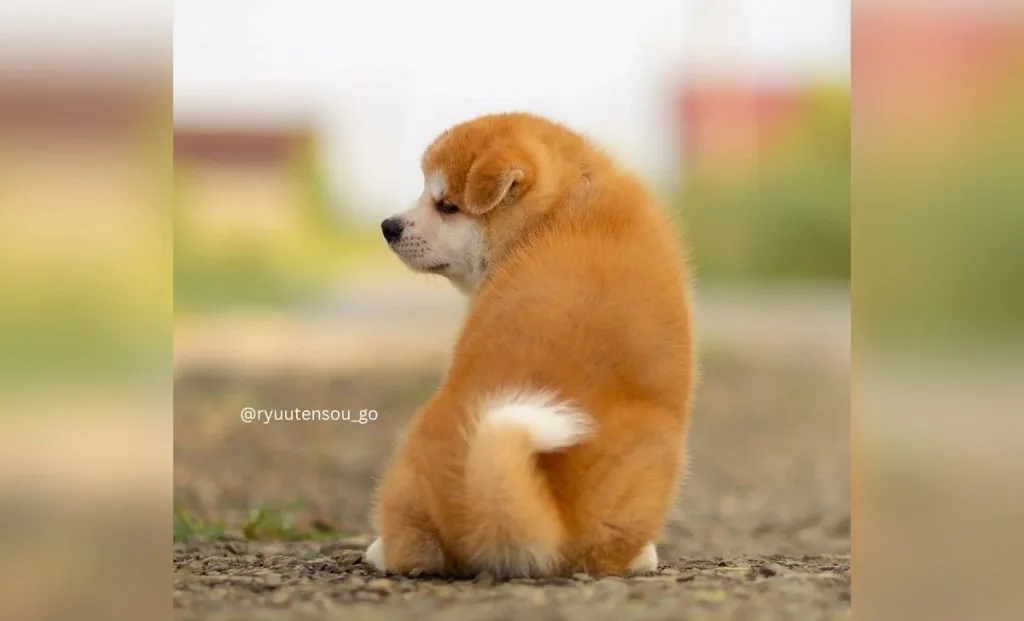
Also known as the neonatal period, this is the time when you shouldn’t expect much from your pups.
During the first weeks, little Akita pups will spend most of their time eating and sleeping. They will be entirely blind and deaf until around three weeks of age, and they’ll entirely depend on their mother, both for food and for warmth and protection.
You shouldn’t interfere with mother Akita too much, as she knows what she is doing. However, regular weighting can tell you whether your pup is of a healthy weight.
If you suspect you have a runt of a litter, take him to the vet as soon as possible, as puppies are extremely sensitive. If there is something wrong with your pup, he will need to get veterinary assistance as quickly as possible.
1 – 2 Months
During this crucial phase, most Akita puppies will have opened their eyes and started exploring the world around them. However, they’ll still stick close to their mother, even though you’ll see they’re curious.
Their hearing will also improve, and you might see them react to loud noises.
Once your Akita inu puppy is around 5 weeks old, it’s time to wean him off his mother’s milk and start introducing him to puppy food. As this transitional period can be very difficult for his stomach, make sure to go very slowly and don’t force him to eat solid food if he isn’t ready.
Your puppy will experience rapid growth at this time, especially once he switches to adult dog food.
2 – 4 Months
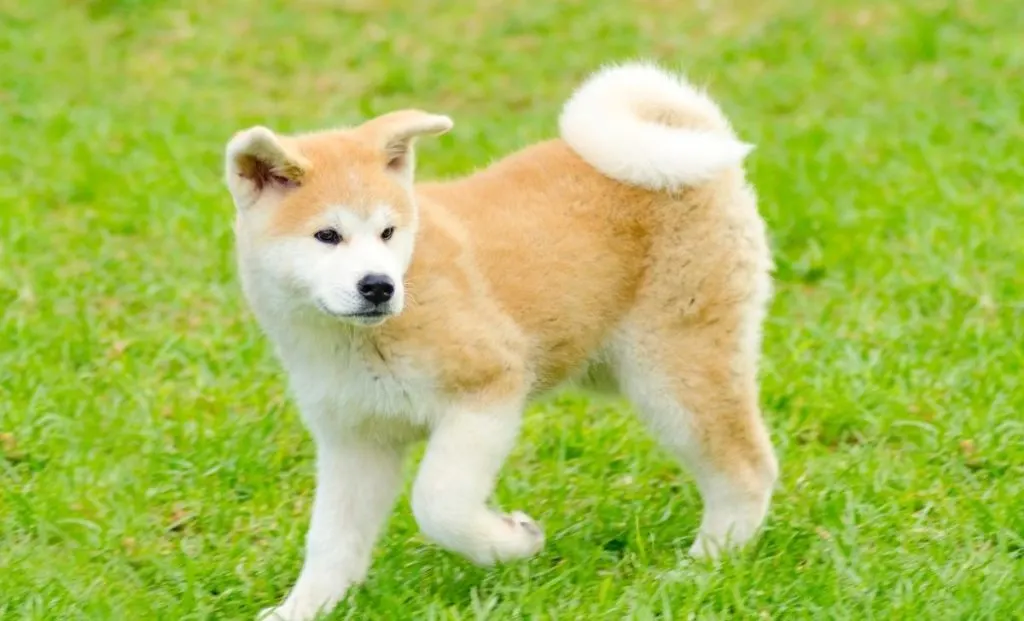
This is the time when you should start worrying about your pup’s physical and emotional needs.
Early socialization is crucial for aloof dogs such as Akitas, so you better start now! Make sure your pup is exposed to various sounds, animals, and experiences during these early stages. This will make him more prepared for the real world and a new home.
As most breeders will have their pups go to their new forever families once they turn 8 or 10 weeks of age, most of the responsibility will now be on the owner’s shoulders.
Also, before his 10th week, a puppy should have completed his first set of vaccines and deworming medication.
Finally, while your pup is likely to become more active during this period, don’t go overboard with exercise. Many common issues are the result of owners forcing their dogs to do too much too early, so don’t make this mistake.
However, you should start training your pup and teaching him some basic commands. This might be tricky, though, as your pup will likely be more interested in squirrels and toys than in listening to you.
4 – 6 Months
The initial growth spurt has ended, but your pup will still experience significant growth almost weekly.
By the end of the 5th month, Akita Inu puppies will start resembling small adult dogs and will lose many of their puppy features.
By the end of this stage, you should switch to adult dog food and stop with puppy food to ensure a balanced diet. Once again, as transitional periods are challenging for a dog’s stomach, make sure the switch is gradual.
Start by mixing small amounts of adult food with puppy food and increase the amount every week until your pup is fully eating adult food.
Lastly, as your pup is nearing adulthood, you’ll probably start to notice all of his individual behavioral characteristics and what sets him apart from other dogs. Isn’t it amazing?
6 – 24 Months
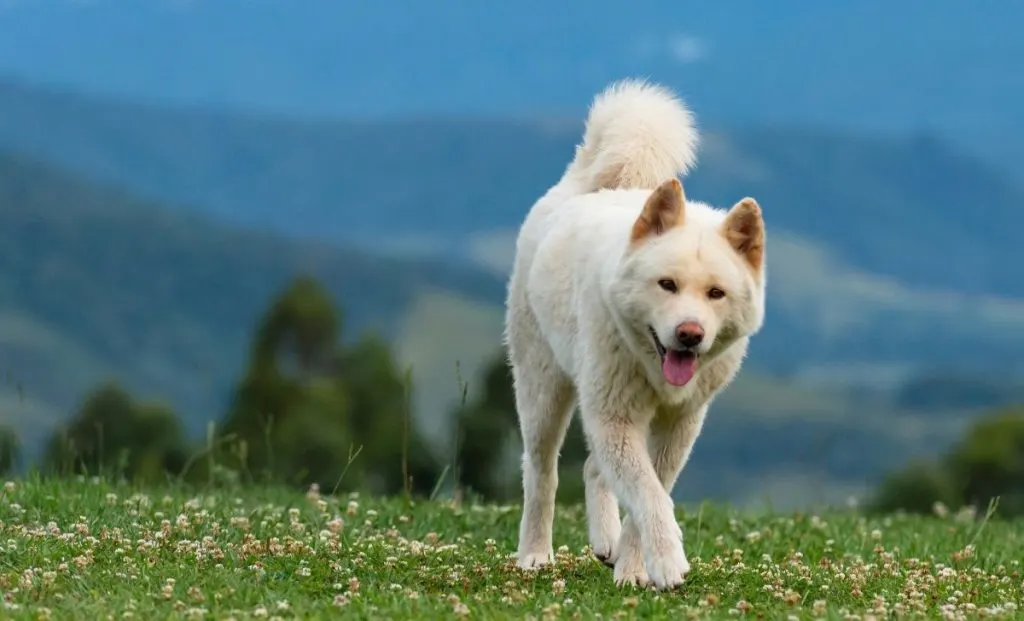
Once your pup is around 6 months old, he’ll reach his sexual maturity – although you’ll have to wait until his first birthday to see him in his full physical maturity.
By this time, his training should be in full strength, and he should be properly socialized – but it’s never too late to let him have new experiences.
Most dog owners will fix their dogs when they are between 6 and 12 months of age, so start thinking about this, as well. Just remember to consult with your vet first.
Finally, your dog will most likely reach his adult size at around one year of age. This, however, doesn’t mean that he will stop growing entirely. You might still see some changes in his weight. This is perfectly normal, as he is still developing muscle mass.
Still, all growth should stop at around the 24-month mark. If his weight continues to increase, chances are he will become overweight, so keep an eye out for that.
Congratulations! You have gone through all Akita growth stages, and your puppy is now a full-grown dog!
Factors That Affect Growth
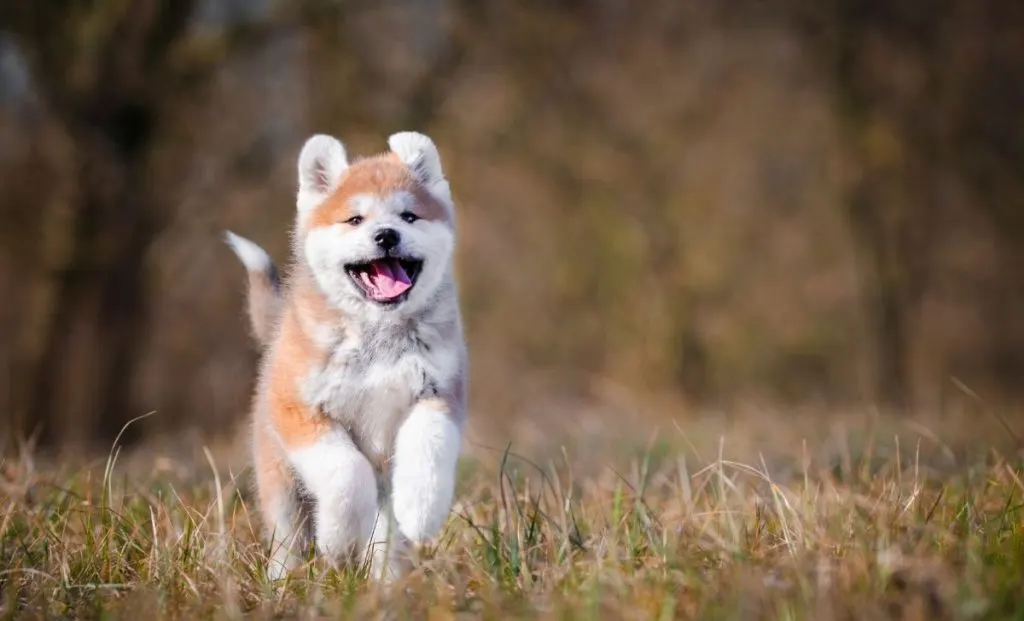
As mentioned before, there’s no reason to panic if your little bear dog is just a bit behind or ahead of the predicted growth stages. A dog’s physical growth can greatly depend on several factors, some of which you can have some effect on and others of which are unchangeable.
Here are some of the reasons why your pooch might be falling behind on his growth milestones:
Genetics
Genetics are the most important factor that will affect your Akita Inu’s growth. They determine everything about your pup’s physical characteristics, from its distinctive look to its growth speed and full-grown size.
For example, if the parents of the dog are larger than average, the pup is likely to be overgrown, as well.
Similarly, if your pup is the product of runts of the litter, then the chances are he will be smaller than usual.
This is why it’s important to look for reputable breeders who will conduct genetic testing to make sure your pup is not only healthy but also has a size that is up to the breed standard.
Also, you can ask your vet whether they conduct DNA testing of dogs that can give you information about your pup’s genes. This type of testing is often able to predict your puppy’s size.
Nutrition
Proper diet is extremely important for your pup’s development, especially during formative months. If you don’t fulfill your pup’s nutritional needs, you might end up with an underdeveloped pup that is much smaller and skinnier than its peers.
On the other hand, if you feed your pup too much, he might grow faster and larger than most of his breed.
However, this shouldn’t be used as a tactic to make your dog bigger. If your Akita baby grows too quickly, he’s more likely to develop serious joint disorders. Not to mention obesity and other health problems that are connected with excessive weight, such as diabetes!
Finally, just because you overfeed your dog, there is no guarantee that he will grow as much as you expect him to. There’s no reason to risk your pup’s health for something that most likely won’t give any results.
Exercise
Did you know that exercise plays a crucial role in having your Akita grow the right way?
Your pup’s physical development and physical characteristics depend on proper activity levels and regular exercise.
Akita Inus are active dogs that need plenty of daily exercise. If you don’t provide your pup with the proper amount of activity, your Akita might end up underdeveloped. This will especially be noticeable on his muscle and joint health.
At the same time, if you force your pooch to have too much exercise too soon, he might end up with joint issues and improper bone development. All of this will reflect badly on his size and overall health.
It’s essential to ensure your dog has enough exercise but not to go overboard. Too much of anything is never a good thing, even if you think it’s doing your doggie well.
Health
Finally, your dog’s size might be a reflection of his overall health.
Akita Inu puppies that have had some health issues during puppyhood might grow smaller than the rest of their litter, at least for a while.
For example, if a puppy has some intestinal parasites, he won’t get all the necessary nutrients important for his development. As a result, his growth will be stunted and you might notice that he is underweight.
Similarly, some bone conditions, such as hip dysplasia, might cause your dog to develop improperly, which will also result in a smaller size.
Finally, spaying and neutering can also affect your dog’s size. If you fix your pooch while he or she is too young you won’t stunt their growth – quite the opposite, you will affect their hormones, which might make them grow taller.
Many large breed owners opt to spay or neuter their dogs while they are very young, hoping they will grow larger. However, fixing should always be done after consulting with a vet. Otherwise, you are risking your dog’s wellbeing.
Should You Help Your Akita Grow?
Some dog owners, especially owners of big dog breeds, want to have a dog that is as huge as possible. They’ll do all they can to make their pups grow larger and faster, from early neutering to overfeeding.
This is a bad practice, and you should never force growth on your dog. Dogs that grow too quickly are more likely to suffer from many health problems, and this is never a good thing.
Sure, a large guard dog will look intimidating when large, but their quality of life and maybe even some physical and behavioral characteristics will be affected.
However, if you notice your furry best friend is underweight, you might want to provide him with proper nutrition, more or less exercise, and take him to a vet for a check-up and maybe to get some care tips for every Akita growth stage.
Regular feeding, proper amounts of activity, and regular health checks are usually enough to ensure your dog is growing properly. For anything more, I would advise you to consult with your veterinarian.
Of course, looking at height and weight charts can help, as these can give you a good idea of whether your pup is of the proper size.
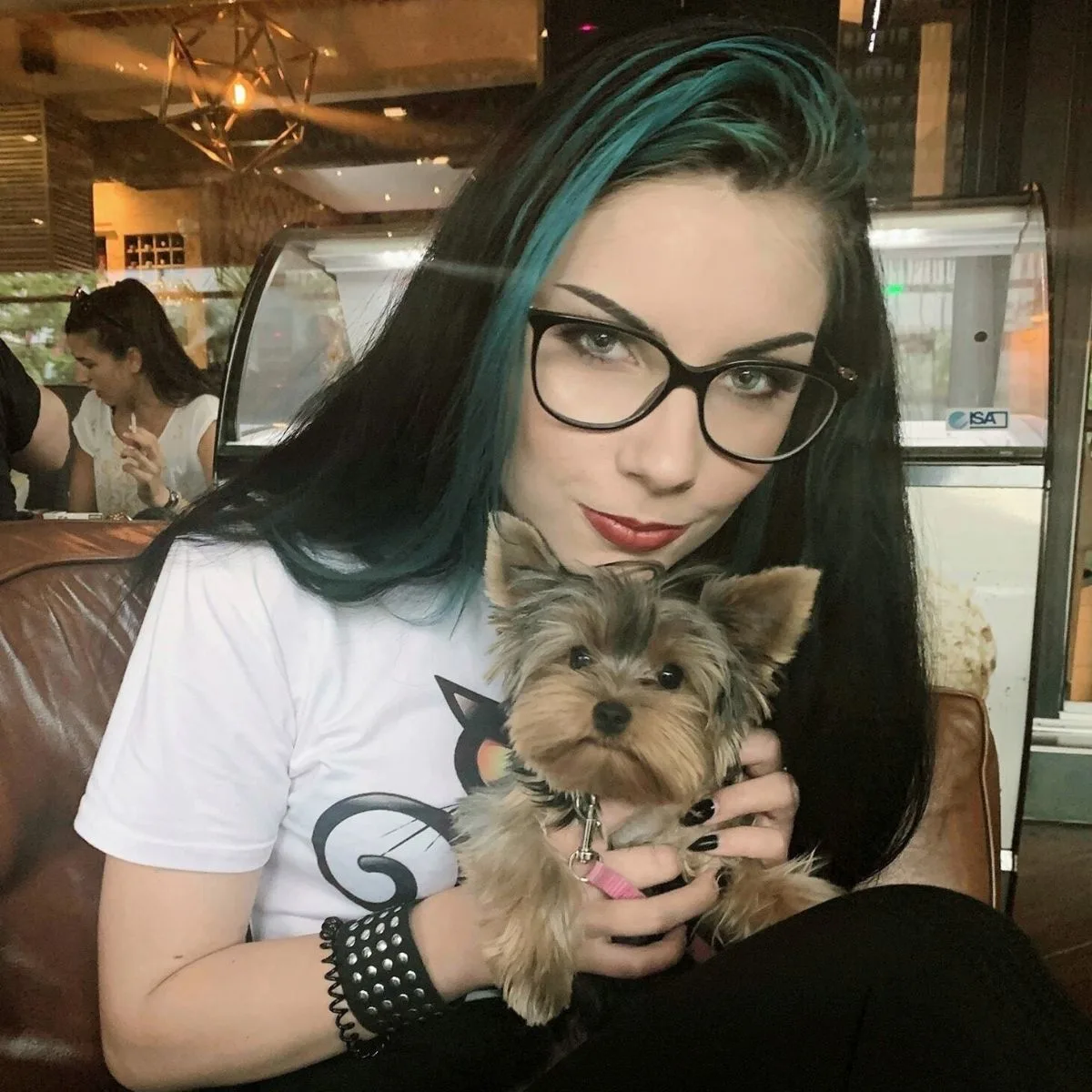
Vanja’s passion for writing started at an early age, which is why she pursued Journalism as her college degree. She can research any topic and find all the information before you bat an eye, which is a great thing for her job but a terrible one for her husband.
Even as a young child, she fell in love with everything fluffy – but dogs have a special place in her heart due to her childhood companion, a Corgie named Archie.
Motivated by her experiences and driven by a desire to give back to her four-legged companions, she spends her free time volunteering at a local dog shelter.
